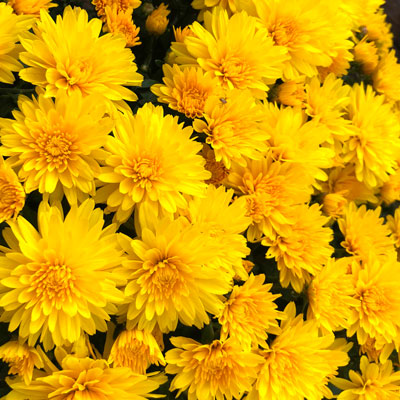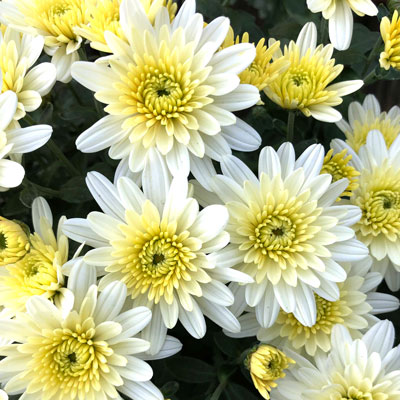Falling for Mums
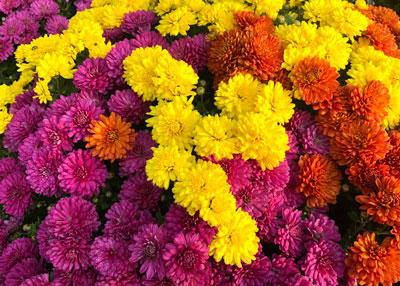
I stopped by a Calloway’s Nursery a couple of days ago to pick up some things I’ve been needing and they had one of the prettiest displays of mums I’ve seen in a while. With Thanksgiving just a couple of weeks away they’ll be making their way to front doors and patio gardens to add splash and sparkle.
I started this story with two goals in mind. I’ll guide you on how to enjoy and grow mums once they finish blooming this year and into the future, and I’ll tell you a bit from my past with regards to this wonderful flower.
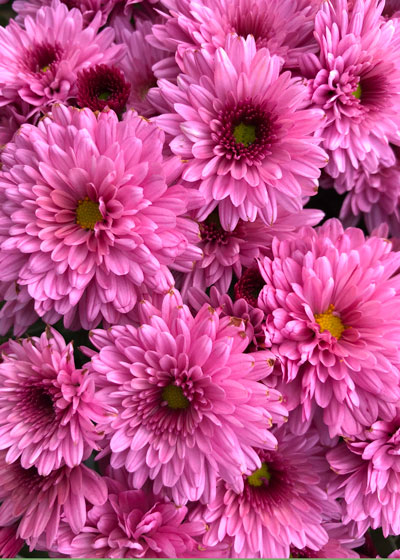
Enjoy them now and beyond…
Keep your potted mum moist and it should be colorful for 3 to 5 weeks. That assumes it was fresh and just reaching full flower when you bought it.
Once it finishes blooming and the flower heads start to fold up and fade, cut the stems back to 2 to 3 inches. You’ll probably see one plant in each pot, but you might also see as many as three. If you have more than one, carefully cut or break them apart and plant them separately.
Set the new plants into well-prepared garden soil at the same depth at which they were growing originally. Firm the loose soil around them and water them deeply. You can probably already see the new shoots starting to grow up from their bases. Those will be next year’s stems.
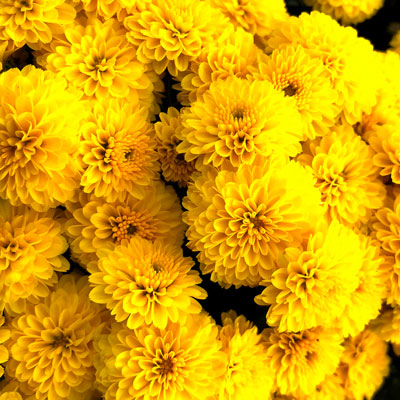
Plant your mums in full sun and into a bed that drains perfectly. You might put a small garden stake alongside each plant just to protect it from getting stepped on over the winter.
As spring unfolds pinch out the growing tips to encourage side branching. That will keep the plants more compact.
You’ll likely see your plants form buds and flowers in the spring because the lengths of the nights in the spring correspond to nights in mid-fall, and it’s those night lengths that trigger the flowering mechanisms in mums. Let them bloom for a few weeks, then trim off all the flowering growth and let the plants grow vegetatively until the fall blooming season.
A few things from my past…
• When I was a kid I wore out the mailorder catalogs that came to our house in College Station. They had what they called “cushion” mums. The plants in those photos looked artificial – like pincushion tufts of blossoms. But that was not unlike what you’re seeing in many of these photos.
• Mums are much more common in northern gardens. Those folks plant them in drifts, and I have to admit they’re really spectacular while they’re in bloom in September and early October. (They bloom earlier in those more northern areas.)
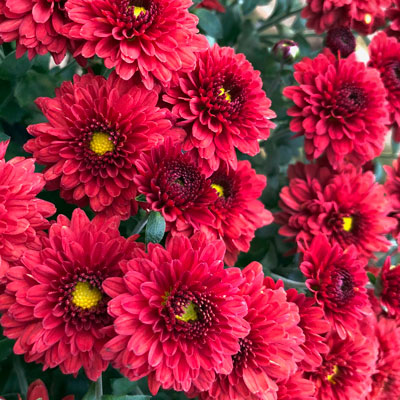
• Soon after I transferred from A&M to Ohio State we took a field trip to Yoder Brothers in Barberton, Ohio (outside Akron). Yoder’s was the source of chrysanthemum cuttings for pot mum growers all over America. They rooted millions of cuttings per month in the biggest greenhouses I’ve ever seen. Somewhere in my old 35mm slides I’m sure I have one that I took standing in the middle of what I believe were 80×600-foot greenhouses, all filled with mum cuttings. One of my good friends at Ohio State was the son of a key administrator there, and the man I taught high school with in Shelby, Ohio, was the son of the shipping manager.

• You’re aware that chrysanthemums are photoperiodic. That means that they measure the length of the dark period each night. There is a hormone in their growing tips that is destroyed by light. When there are 13 or 14 hours of uninterrupted darkness each night enough of the hormone accumulates to promote blooming. If you want to keep mums growing you turn a light on in the middle of the night to give them two “short nights” instead of one longer dark period. If you want them to bloom when the nights are naturally short (summer), you pull black shade fabric over them from 5 p.m. until 8 a.m.
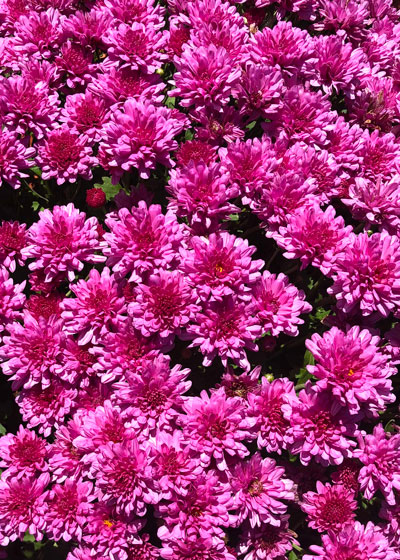
• You pinch the growing tips out of mums to make them branch and produce more stems and more flowers of smaller individual sizes.
• Conversely, if you want one large flower you remove all the side buds in the axils of the leaves up and down the stem. That’s called “disbudding,” and it’s how you get big football mums.
• And finally, did you know that what we’ve been calling “flowers” are really collections of hundreds of tiny flowers? Mums are in the Composite plant family. Each flower head is made up of many individual flowers. Other common Composites include zinnias, marigolds and sunflowers.

